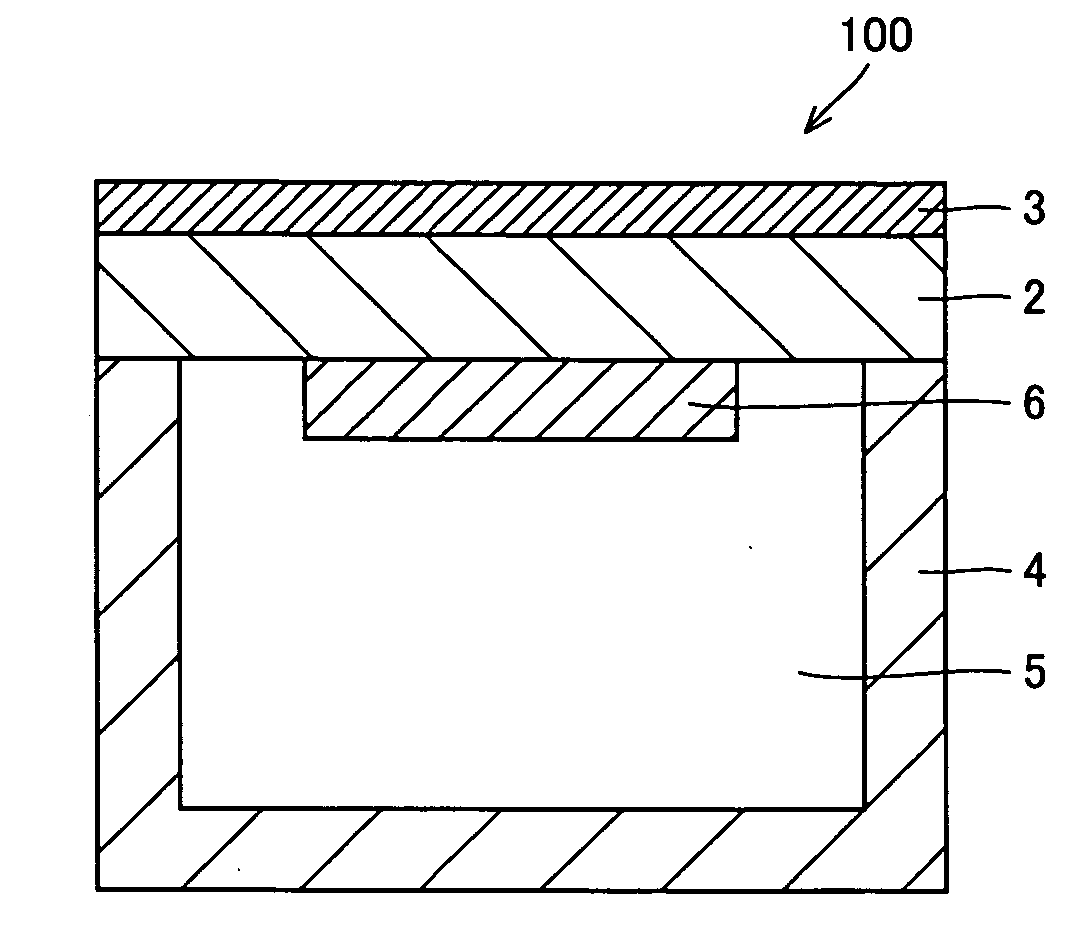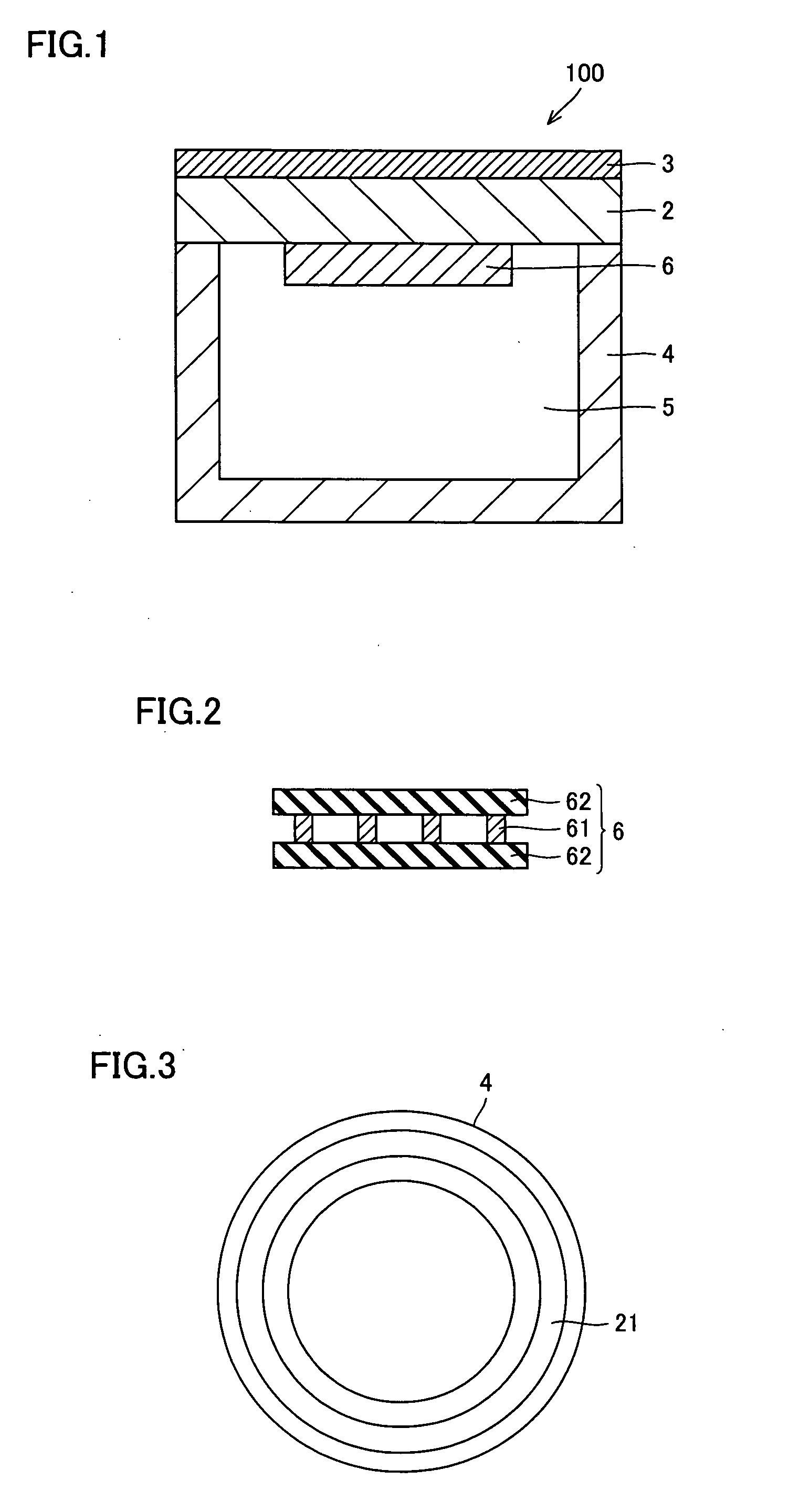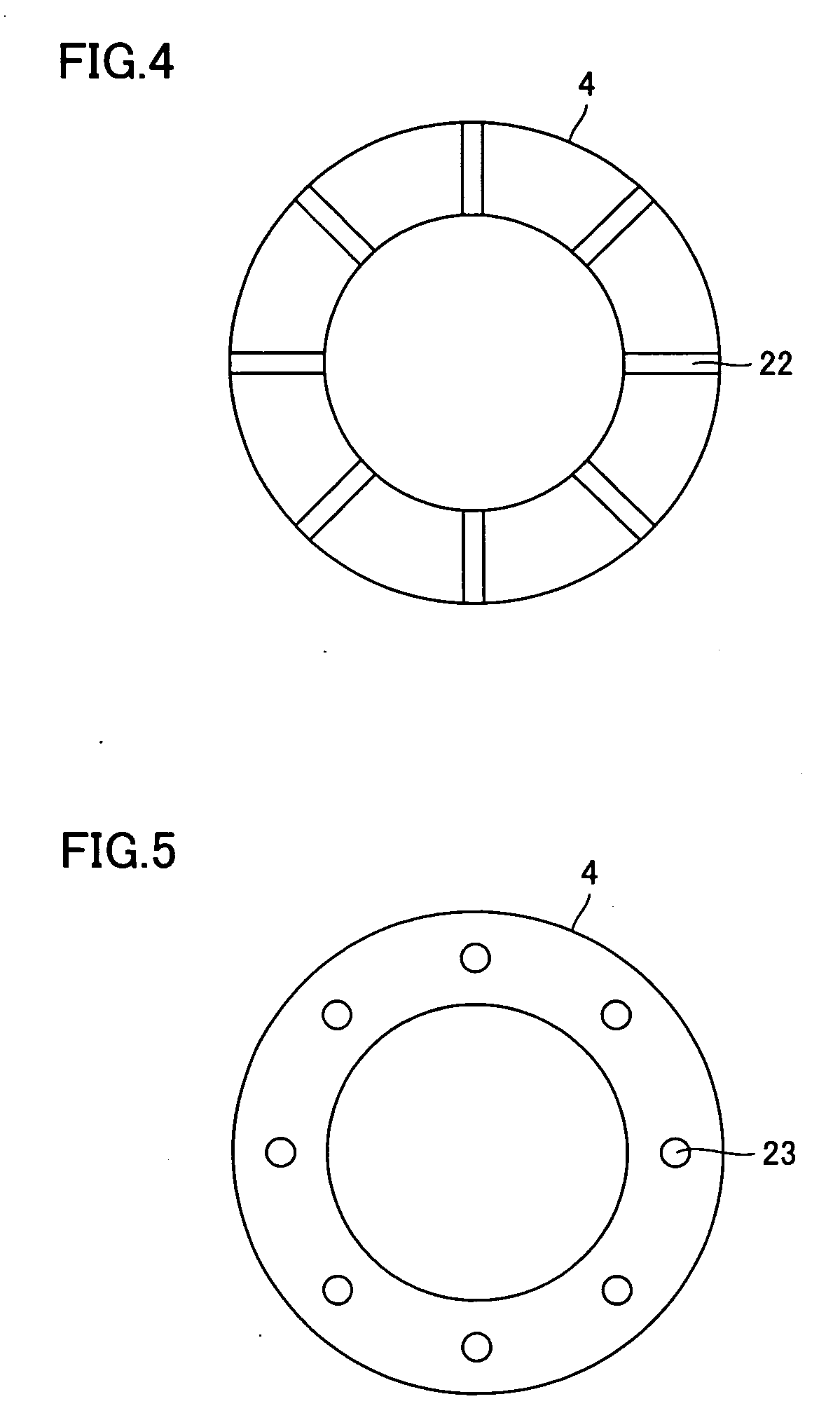Wafer holder, heater unit used for wafer prober having the wafer holder, and wafer prober having the heater unit
a heater unit and heater technology, applied in the field of heater units used for wafer probers and heater units, can solve the problems of long time to increase and decrease the temperature of the heater, the contact failure of the wafer and the probe pin, and the drawback of improving the throughput, so as to achieve better thermal uniformity of the wafer
- Summary
- Abstract
- Description
- Claims
- Application Information
AI Technical Summary
Benefits of technology
Problems solved by technology
Method used
Image
Examples
examples
[0118]Six Si—SiC substrates having the diameter of 310 mm and the thickness of 15 mm and different water absorption were prepared as the material for chuck top 2. On the wafer-mounting surface of these Si—SiC substrates, suction trenches in the shape of concentric circles, suction holes and a suction inlet for vacuum chucking a wafer were formed, and the wafer-mounting surface was nickel-plated to form chuck top conductive layer 3. Thereafter, chuck top conductive layer 3 was polished and finished to have the overall warp amount of 10 μm and surface roughness Ra of 0.02 μm, and thus, chuck tops 2 were formed.
[0119]On the other hand, six mullite-alumina composite bodies of a pillar shape having the diameter of 310 mm and thickness of 40 mm were prepared as the material for supporter 4. One flat surface of these mullite-alumina composite bodies was counter-bored to have the inner diameter of 295 mm and the depth of 20 mm, and thus, supporters 4 of hollow cylindrical shape with a botto...
PUM
 Login to View More
Login to View More Abstract
Description
Claims
Application Information
 Login to View More
Login to View More - R&D
- Intellectual Property
- Life Sciences
- Materials
- Tech Scout
- Unparalleled Data Quality
- Higher Quality Content
- 60% Fewer Hallucinations
Browse by: Latest US Patents, China's latest patents, Technical Efficacy Thesaurus, Application Domain, Technology Topic, Popular Technical Reports.
© 2025 PatSnap. All rights reserved.Legal|Privacy policy|Modern Slavery Act Transparency Statement|Sitemap|About US| Contact US: help@patsnap.com



